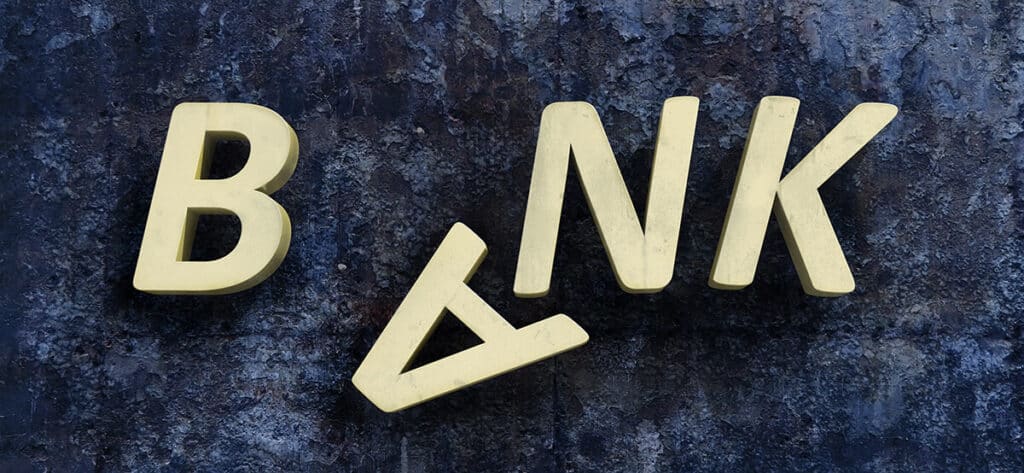How To Protect Depositors from Bank Failures? Prevent Banks from Taking Big Risks
While it would be appealing to have a clear, singular villain to blame, it took many actors and decisions to set up the conditions that led to three bank failures in the last few weeks. Banks, regulators, depositors and politicians all played a role.
The driving forces were not complex mysteries. Banks took on too much risk, and when signals of risk emerged, changes to banking rules made during the Trump administration left small and mid-size banks susceptible if interest rates went up.
Fortunately, setting things right may not be too complex, either.
A recent report found that uninsured deposits comprised 90% and 88% of all deposits held at Signature Bank and Silicon Valley Bank (SVB). They also had billions in unrealized losses on their balance sheets.
Allowing those conditions to co-exist created a recipe for disaster, as the risk of the former would make a bank vulnerable to its latent weakness in the latter. Not surprisingly, as soon as momentum built among depositors to pull their funds, those banks had to sell securities at a loss. Fickle depositors pulled billions in deposits within days of a shaky report by SVB to its investors. SVB sold $21 billion of those below-value bonds to meet those requests.
But SVB and Signature were not outliers. At the end of 2022, US banks had $620 billion in unrealized losses. During the pandemic, many banks put their excess deposits into Treasury bonds. When the Fed raised interest rates, the value of those bonds plummeted. US banks also have more than $1 trillion in uninsured deposits.
Bank leaders ignored those risks, most likely because derisking would mean reporting losses to their investors. Relatedly, SVB had allowed its Chief Risk Officer position to remain unfilled for eight months.
Was it a mystery that the Federal Reserve intended to continue to raise its overnight rates? Were there tools available to hedge against increases in interest rates? You could argue that SVB’s board committed financial malpractice.
But warnings issued by bank regulators fell on deaf ears.
In testimony to Congress in December, FDIC Chair Martin Gruenberg expressed concern that many banks were sitting on unrealized losses on their bond holdings.
Simultaneously, Michael Barr, Federal Reserve Vice Chair for Supervision, called for stricter capital requirements. He called it irresponsible to expect taxpayers to bail out banks during times of distress.
Instead, regulators did the best they could to enhance a key firewall. In October, after pushback from banks and their representatives, it increased the assessments paid by banks to capitalize the Deposit Insurance Fund (DIF). The DIF had fallen to a level that barely met statutory requirements.
The last administration and Congress undermined sensible safeguards in the Dodd-Frank Act that would have given regulators tools to prevent what happened at SVB and Signature. Dodd-Frank subjected bank holding companies with more than $50 billion in assets to a tiered set of enhanced prudential regulation (EPR) standards to support greater financial stability. In 2018, Congress exempted banks with between $50 and $100 billion in assets from EPR and weakened the rules for banks between $100 billion and $250 billion. Over the next year, rules for evaluating risk at small and mid-size holding companies were simplified. SVB and Signature Bank had assets of $207 billion and $110 billion, respectively.
One aspect that bears relevance today concerns how the new rule changed the treatment of unrealized losses on the assets held by banks. While the largest banks had to account for unrealized gains and losses on their securities, smaller banks could opt out. When implementing Dodd-Frank, the Federal Reserve’s 2013 rule counted most unrealized losses, but the Trump-era rewrite allowed small and mid-sized banks to hide them from reviews. Regulators could have done more to tighten how they enforced rules, and they still can.
Moreover, even with the powers they still had, the Federal Reserve should have seen the warning signs. It is true that SVB would have passed the lighter stress test made possible by the 2018 law, but the problems were in plain sight. Publicly-available call reports revealed how SVB’s securities holdings created interest rate risk. Likewise, FDIC data demonstrated how a high share of SVB’s deposits were uninsured. While the 2018 law is a smoking gun, the lack of meaningful supervisory intervention cannot be ignored either.
Other unrelated issues underscore the same conclusion. The government can and should intervene to disrupt a status quo where self-interested decision-making by banks can undermine the public interest. The detail that Signature Bank had an active stock buyback plan – a step that reduces a bank’s equity – deserves attention, too. Companies issue stock buybacks solely because it raises the price of their shares. But while investors gain from buybacks, it adds risk.
In the name of profit, our system gives banks the freedom to take risks. Our regulators allow US banks to take more risk than Canadian regulators who oversee banks north of the border. It is the American way to provide backstops, first with deposit insurance and potentially with greater government intervention when things go wrong. We like to privatize profits and socialize losses. That is not a politically-biased opinion: Andrew Jackson introduced the idea, Michael Harrington coined it, and when Joseph Stiglitz talked about it in Zuccotti Park, Occupy Wall Street cheered.
Politicians and regulators must establish better preventative rules to ensure our economy does not remain vulnerable to excessive private risk-taking. Once government backstops have put out this fire, regulators should increase capital requirements. Special safeguards should apply to banks with unusually high shares of uninsured deposits. When banks have unusually high levels of unrealized losses, steps should exist to address those underlying threats to their safety and soundness.
Adam Rust is Senior Policy Advisor at NCRC.
Photo: Adobestock ©Photobank



